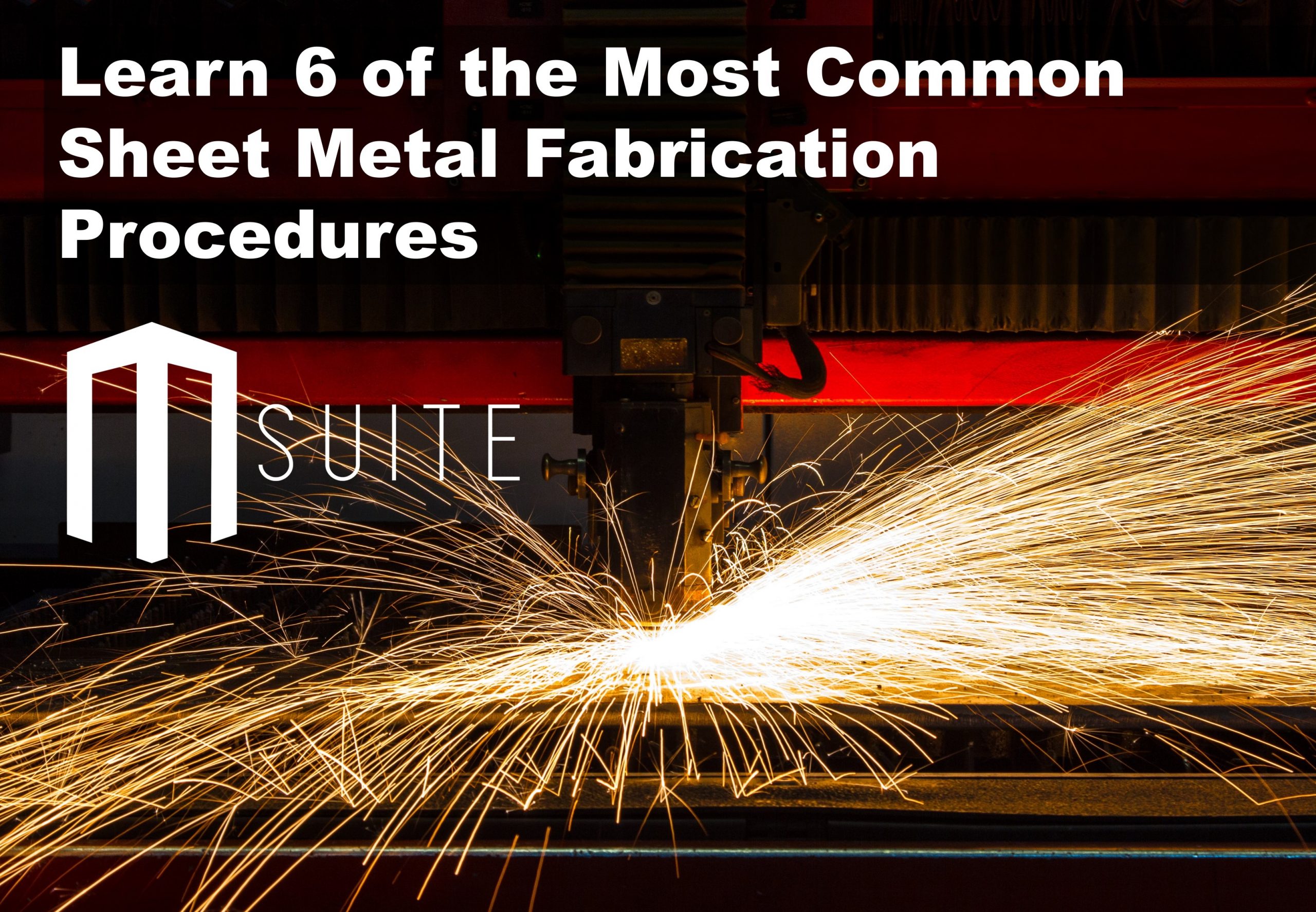There are numerous sheet metal fabrication techniques, but the six procedures listed below are a great starting point for individuals new to the sheet metal fabrication process.
1. Sheet Metal cutting begins every fabrication process.
The thickness of the metal and the project’s specifications determines the specific cutting method used. In this article, we identify several common ways you can cut metal for your next project:
Water jet is a method used to cut sheet metal using a high-powered stream of water that is forced through a narrow nozzle. While water jets can cut through almost any thickness, their efficiency diminishes after approximately 3” of steel.
Torching or cutting torches use focused heat to blast through sheet metal. Each of the cutting methods below create metal vapors that can be hazardous. Proper safety measures should be put in place.
— Laser Cutters per the name, use a highly concentrated laser beam to melt through metal. These cuts vaporize or blow away the metal in its path.
— Oxy-acetylene Torches use an acetylene flame to cut through metal. Oxygen is added at variable rates to increase the temperate of the torch. The heat of the flame oxidizes the metal through a chemical reaction. Therefore, this method should only be used on readily oxidized material, which excludes aluminum.
— Plasma Cutters use high velocity ionized gas which ignites to create superheated plasma. The plasma forces the molten metal away from the “cut” rather than burning away the metal. Plasma cutters are highly effective on metals which conduct electricity.
Shearing is performed using two offset blades that are very similar to scissors. The top blade forces the flat sheet metal down onto the bottom blade producing the cut. There are a variety of smaller hand shears that can be used to manually cut thinner and smaller pieces.
Sawing uses circular bandsaws and saws to cut metal sheets that are too thick to be cut via shearing, water jet, or torch. Sawing is a more prolonged and more intensive process, primarily used for thick metal.
2. Bending is the next step in the sheet metal fabrication process.
There are two ways to do this:
— Metal brake involves placing one end of the sheet metal inside a gate, with the other end clamped in place with a bar. The metal stuck inside the gate is lifted, while the part under the bar stays in place creating the necessary bends of the metal.
— Form bending is performed by bending sheet metal over an edge or shape with blows from a hammer. This is a very “hands on” approach.
3. Welding is then used to assemble the cut and bent pieces. This is where the puzzle pieces come together.
Below we briefly evaluate several welding options available to affix metal. Your welding method is determined by the metal type, metal thickness, and available equipment.
— MIG welding is an arc welding process where a continuous wire electrode is fed through your welding gun and into the weld pool. Shielding gas is provided through your gun to protect the pool from contamination.
— TIG welding uses an infusible tungsten-based electrode and electric arc to establish welds. This process is ideal for welding sheet metals up to 8-10mm thick.
— Laser welding is the process of putting metal together using a high-powered, solid-state laser resonator (like a disc laser) to melt the metal. This method enables a fab shop to generate consistent, high-quality welds.
4. Shrinking Metal is used when a project requires fabrication to smooth out dents or create a specified shape.
Three sheet metal shrinking methods are:
— Heat shrinking uses a torch to heat the dented metal section causing it to overstretch. This may seem counterintuitive. However, once the metal cools it actually shrinks from its original size.
— Tucking metal leverages a planishing hammer and tucking fork to tuck the edges of the sheet metal into place.
— Shrinker machines are used to automate the metal shrinking process. These fascinating machines have jaws that grab the sheet metal and force it together, shrinking it into the desired shapes.
5. Stretching Metal is exactly what it sounds like.
There are several ways to achieve this, but only three main approaches are listed below.
— Stretcher machines have powerful jaws that seize each end of your piece of sheet metal and slowly stretch it to the desired size.
— English wheel is a machine based on the traditional anvil and stretches metal by pressing it against a lower anvil and upper wheel to smooth out imperfections and create compound curves.
— Hammer and anvil (or another heavy-duty object) is a hands-on approach to sheet metal shrinking. The first step is placing the metal on the anvil and repeatedly strike it with a hammer. This process will slowly increase the surface area and stretch the metal.
6. Finishing Metal is the final step in the sheet metal fabrication process.
Adding a metal finish enables it to perform more effectively and last longer. Three standard finishing techniques:
— Sandblasting involves shooting abrasives and sand at a high velocity against your sheet metal. This process creates a matte texture often used to prepare metal for coating.
— Buff polishing uses a cloth wheel to buff the surface of the metal to create a nice shine for your project.
— Metal coating/plating can be applied to your project via chemical baths. Coating alters the substrate and improves the corrosion resistance and durability of your sheet metal.
Sheet metal fabrication is a combination of science and art. There are numerous processes and nuanced techniques which make it essential to have a skilled fabrication team. See how MSUITE’s FabPro is revolutionizing the fabrication shop.








